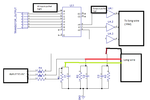burrow
Full Member level 2

- Joined
- Dec 15, 2014
- Messages
- 147
- Helped
- 3
- Reputation
- 6
- Reaction score
- 3
- Trophy points
- 18
- Activity points
- 1,148
Hai , i was having problems while using long wires to feed inputs to pic microcontroller. I tried everything like Capacitors in parallel, resistors in series pull up etc. But i couldn't fix the problem.
So i decided to switch to max232.
So when i use max232 can i avoid all these noise filtering things i made before ?
So i decided to switch to max232.
So when i use max232 can i avoid all these noise filtering things i made before ?



